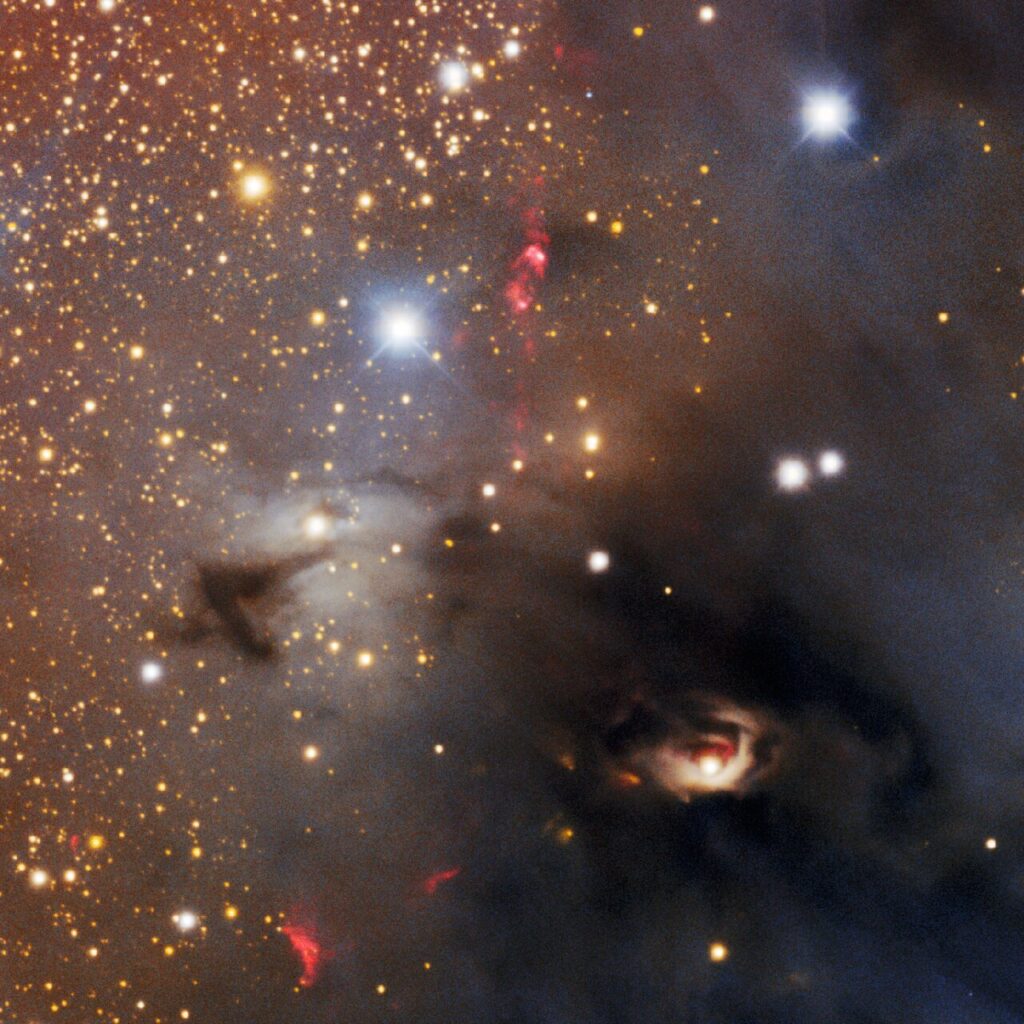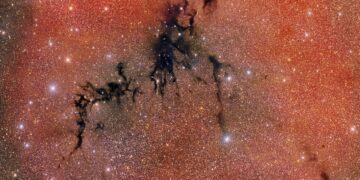In the grand tapestry of the cosmos, some of the most spectacular events unfold behind thick curtains of darkness. The Circinus West molecular cloud, recently imaged with the cutting-edge Dark Energy Camera (DECam), reveals one such hidden theater of creation. Within its dense, shadowy folds, stars are forming from cold gas and dust, crafting new suns that will one day light up the galaxy.
Imaging the Invisible with DECam: Unveiling the Dark Heart of Circinus West
Astronomers have long sought to observe star formation directly, but dense molecular clouds typically block visible light, making it nearly impossible. However, with the 570-megapixel Dark Energy Camera (DECam) mounted on the Víctor M. Blanco 4-meter telescope in Chile, scientists have captured Circinus West in unprecedented detail.
DECam, one of the most powerful astronomical cameras in the world, allows researchers to peer through the opaque dust. The images taken from the Cerro Tololo Inter-American Observatory (NSF NOIRLab program) reveal intricate structures — from sweeping filaments of gas to pockets carved out by newborn stars. The ability to observe Circinus West’s hidden stars in such clarity marks a leap forward, enabling researchers to piece together how dense clouds transition from darkness to luminous star clusters.
The success of DECam’s imaging demonstrates how technological advances are unlocking views of regions once thought forever cloaked, pushing the boundaries of observational astronomy deeper into the hidden universe.
Signs of Star Birth: Cavities, Outflows, and Herbig-Haro Objects
The clearest evidence that Circinus West is bustling with stellar birth lies in the dynamic structures seen throughout the cloud. Small bursts of light puncture the darkness—these are not background stars, but newly forming stars that have begun clearing away their birth material.

Powerful jets, known as molecular outflows, blast through the surrounding gas as protostars release excess momentum. These jets carve out cavities, making it possible for some light to escape the cloud. In Circinus West’s central region, known as Cir-MMS, these features are especially vivid. The area, visually resembling a stretched hand, teems with energetic outflow sources, each one signaling an infant star’s early struggles against its environment.
Adding to the richness are Herbig-Haro (HH) objects—bright red patches that form when outflows from young stars smash into slower-moving surrounding material. In Circinus West, multiple newly discovered HH objects flutter across the dark nebula, offering direct proof of the violence and vitality inherent in star formation.
These visual markers serve as signposts, helping astronomers map where and how new stars are igniting within the cloud. Each outflow and HH object is a beacon, telling the story of stellar genesis amid the interstellar shadows.
Scientific Importance: A Natural Laboratory for Stellar Genesis
Circinus West is far more than a beautiful cosmic vista—it is a crucial laboratory for understanding the very foundations of astrophysics. By studying the cloud’s active star-forming regions, scientists gain insights into how protostars accumulate mass, how they interact with their surroundings, and how feedback mechanisms regulate star birth.
Observations of molecular outflows and HH objects in Circinus West allow researchers to probe how newborn stars influence the structure and evolution of their parent clouds. Understanding these dynamics is essential for modeling how clusters of stars, like those found in spiral galaxies, emerge from cold, chaotic beginnings.
Moreover, the conditions within Circinus West are thought to mirror those under which our own Solar System formed over four billion years ago. By examining places like this, astronomers are essentially looking back in time, exploring the ancient environments that seeded the planets—and possibly life itself.
The Road Ahead: Future Research on Circinus West
While the DECam images have offered a spectacular glimpse into Circinus West, much work remains to unravel the cloud’s secrets. Future studies will involve multi-wavelength observations, combining infrared, radio, and submillimeter data to penetrate even deeper into the densest parts of the cloud.
Mapping the full population of young stellar objects (YSOs) in Circinus West will require careful spectroscopic surveys, aiming to understand the ages, masses, and formation rates of the new stars. Detailed studies of the outflows—examining their speeds, chemical compositions, and interactions with surrounding gas—will help clarify how stellar feedback influences cloud fragmentation and star cluster formation.
Additionally, comparisons between Circinus West and other molecular clouds, such as the Orion Molecular Cloud and the Lupus star-forming regions, will help determine how unique or typical its star formation processes are.
Conclusion: Circinus West—Where Darkness Gives Birth to Light
The unveiling of Circinus West is a breathtaking reminder that the universe’s grandest creations often happen far from the spotlight. Hidden behind thick veils of dust, stars are being born every day, shaping the future of galaxies and seeding the cosmos with the ingredients for planets and life.
Thanks to the power of DECam and the dedication of astronomers, we now have a window into one of these secret places. Circinus West stands as a monument to the dynamism of star formation, a dark cradle from which new suns emerge to illuminate the galaxy.
For More Info:



















